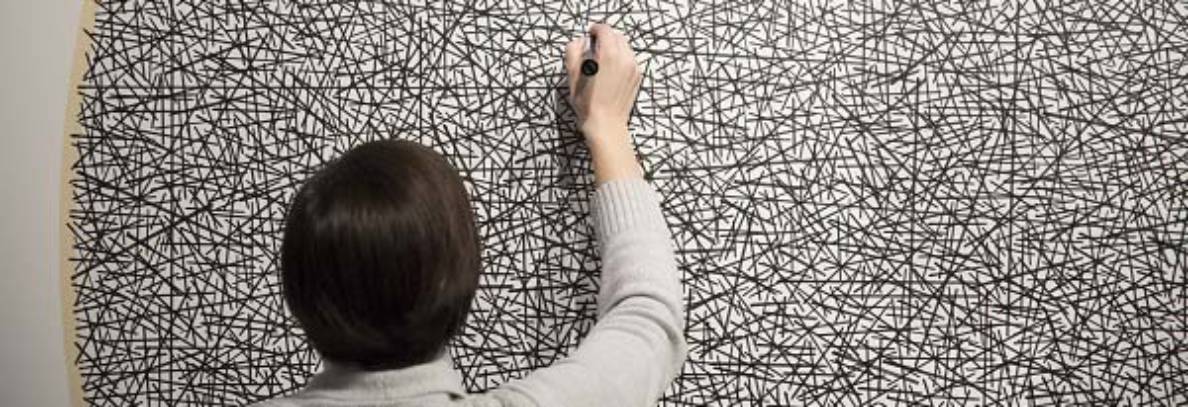WEEK 1
Make A Kilometre
For this assignment I decided to do a simple task but with a little twist. Every day we waste so much time on stressing not doing anything, or gaming, or watching tiktok for hours. (not necessarily all these activities) So I took time walking down my neighbourhood for a kilometre and timed myself to see how long would it talk for me to walk a kilo. Turned out it only took me 14 minutes and 41 seconds to complete. We could do so much in almost 15 minutes. For instance, we could read a short chapter of the novel, prepare for dinner, make art, study, watch an educational documentary…etc. Since I’m not good at time managing and organize things, this could also be a simple practice to manage my time better too. Therefore, I took time and created a small painting in 15 minutes and recorded it.
Sol Lewitt: For All to See
Sol Lewitt has an unique way of thinking about art, he thinks he’s the composer of music. When he talks about “the idea is the machine that makes the art”, he is talking about the subsequent artists would be able to reinterpret and re-execute his original work. Because his part was simply only the planning part, and rest of the artists in the team need to do is follow the instructions. As shown in the video, a group of artists (mostly students) are carefully following his instructions and illustration to recreate one of his works.
Yoko Ono reading from her Grapefruit book:
Where do you draw the boundaries around the artworks in this video? What are the artworks? What strategies and tools does Ono use to challenge the viewer? Do you like any of these concept-works? Discuss.
It was quite interesting watching Yoko Ono reading from her Grapefruit book. She has a very unique way of describing her artworks. The artworks mentioned in the video are mostly about simple tasks that people can do and treat them as art. I think there isn’t really any boundaries around the artworks in this video, because it is difficult to say what is art and what is not. Artists create art pieces to express their feelings and to send a message to the viewers which in this case Yoko Ono allows viewers to be a part of her artworks and allows them to participate as well. I do enjoy her exercises that she mentioned in the video such as her cleaning piece (sadness stones and happiness stones) and wish piece (write down a wish on a piece of paper and tie them around the wish tree, ask friends to do the same and cover the tree until it’s covered with wishes). I think these are good practices because they aren’t just simply “instructions”, but they are things that’ll deepening your thoughts and open your eyes more to see much different perspectives of art.
Describe two works by Bruce Nauman (include images) where he frames every day actions (non-heroic, banal) as art. How are they “framed” as art, and what does the framing do to our understanding and experience of the actions?
WEEK 2
Marina Abramović
WEEK 3
- Lee Walton: Moving objects in ways against their normal placement.
- Sitting: sitting silently and closely next to random people in the park
- Jon Sasaki – Ladder Climb: Climbing up an unsupported ladder and proceed to multiple attempts.
- Dead End: Driving a white van into a dead end of an alleyway and trying to turn around
- Lenka Clayton: A kid in red jumpsuit walking down the road and continuously looking back until the parent finally catches up
- Yuula Benivolski: …? (no video provided)
WEEK 4

Hi Suzanne, lots of work is missing here – I’ll check back later this week for grading –
Diane